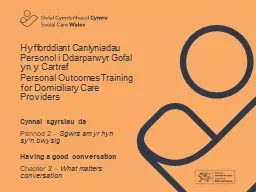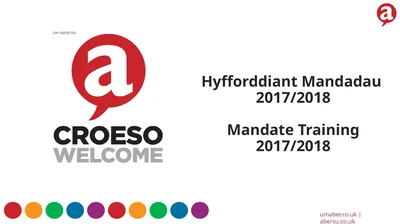PPT-Hyfforddiant Canlyniadau
Author : phoebe-click | Published Date : 2019-11-22
Hyfforddiant Canlyniadau Personol i Ddarparwyr Gofal yn y Cartref Cynnal sgyrsiau da Pennod 2 Sgwrs am yr hyn syn bwysig Personal Outcomes Training for Domiciliary
Presentation Embed Code
Download Presentation
Download Presentation The PPT/PDF document "Hyfforddiant Canlyniadau" is the property of its rightful owner. Permission is granted to download and print the materials on this website for personal, non-commercial use only, and to display it on your personal computer provided you do not modify the materials and that you retain all copyright notices contained in the materials. By downloading content from our website, you accept the terms of this agreement.
Hyfforddiant Canlyniadau: Transcript
Download Rules Of Document
"Hyfforddiant Canlyniadau"The content belongs to its owner. You may download and print it for personal use, without modification, and keep all copyright notices. By downloading, you agree to these terms.
Related Documents


